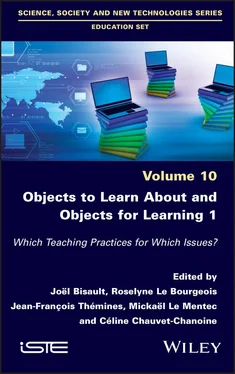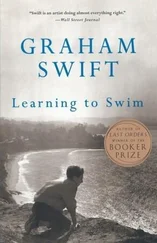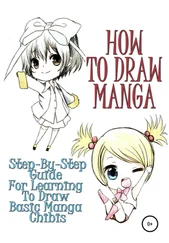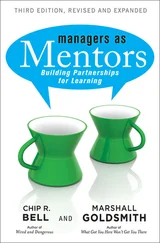The presence of objects at school is thus regulated and depends on educational issues and therefore education policies. Vincent (1980) looks back on the arrangements of space and furniture and the function of supervision: the playground as a transitional space, the platform and rows of tables to structure the displacement flows; preference for tables with two places, with a rack with perforations for checking the hands; a slate with a special pencil and copper pencil holder to check handwriting movements or to monitor learning progress following the familiar “La Martinière” process… In the same spirit, wooden rifles have been approved and recommended ever since the bloody defeat of Sedan which led to the fall of Napoleon III and the establishment of the Republic. The desire for military preparation at school was therefore in the spirit of the times, as Paul Bert pointed out in a speech to teachers delivered on September 18, 1881:
We want rifles for school… yes, rifles, little rifles that each child will learn to handle from school, the use of which will become for him something instinctive, that he will never forget and that he will not need to learn later. For this little child, remember this, is the citizen of the future, and in every citizen there must be a soldier; and a soldier who is always ready. (Bourzac 2004, pp. 86–87)
As early as 1882, gymnastics and military exercises were on the syllabus with the acquisition by municipalities of wooden Flobert-type rifles in order to prepare pupils in middle and higher classes in the handling of weapons, a process of initiation that continued in school battalions. These were “objects to learn about” in order to respond to the political challenges of the times, in the same way as cooking utensils, brooms, etc. contributed to girls’ personal and professional training in household education. Similar factors can be identified for the inclusion nowadays of learning objects such as educational robots (BeeBots) or other programmable objects that play a part in teaching algorithms and computer science, introduced in the early 1980s (Big Trak, the floor turtle, Lego, etc.) then abandoned and recently rediscovered.
I.1.3. Objects of the school environment
The preoccupation with the “material culture” of school is defined by Julien and Rosselin (2005, p. 5) in its Anglophone meaning, according to which it looks at “objects as specimens of culture (hence the term Material Culture) and which differs from the position of French anthropologists who are more interested in the technical gestures that support the manufacture and manipulation (hence the preference for a ‘cultural technology’)”. These authors underline the fact that in the two traditions, the culture is anchored very firmly in the material. They suggest that this anchoring in the material relates to symbolic, political or religious fields. They then explain that “the porch, stoup, baptismal font, missal, pew, altar, crucifix, rosary, confessional, candle, host are objects of Catholicism without which practices and beliefs would be lacking in resources”. These authors go on to suggest that “the French tradition follows the thinking that pens, lecture halls, benches, do more than reveal student culture (which boils down to much more than academic life); the school subject [in the sense of academic discipline] is not merely a symbol of their belonging to this culture. In their gestures with the objects, students construct themselves as students and, in doing so, help to forge a specific culture” (ibid.) .
With this anthropological perspective, all school objects are objects for learning about the pupil role, the school environment’s code of practice, the ways of doing, saying and thinking about teaching–learning, the appropriate stance for each subject, teaching materials and their functions, from the printout to be filled out in line with ritualized rules to implementing the interactive whiteboard in accordance with the dialogue teaching method but without actually asking oneself questions about the operation of this hi-tech object. However, these material cultures should be thought of in the plural according to the distinction between the segments and the contrasting school and university paths in general, technological and vocational education. These differences lie at the often unspoken root of the construction of educational inequalities when the boundaries between school and out of school are crossed with no warning of the change in spaces for socialization and the register of uses of peripatetic objects from the home, school or extracurricular spheres, for instance museums (Netter 2018). The same is true for children’s documentaries which, introduced into the classroom, may sometimes be aimed at questioning, imagining technical solutions or even assessing language proficiency levels.
This first point about the material culture and hence socio-cultural and commercial products such as teaching resources involves the frequent nuance between didactic function (linked to content) and pedagogical function (without specified content) (Bédard et al . 2006 7). This point opens the way to the second part of this introductory text which deals with the uses and teaching practices of the objects to be learned by seeking to propose a problematization.
I.2. Teaching practices: States and statuses of objects
For Bédard et al . (2006, p. 3), “didactic and pedagogical material occupies a triple junction position: first between social demand, education and publishing; then between the formal curriculum and the real curriculum […]; finally, according to the use for which they are intended, between teaching and learning”. Furthermore, “didactic and pedagogical material must also act as a tool for the development of teaching professionalism”.
I.2.1. Objects, artifacts, instruments
There are many uses for the concept of the object. Most of the contributions to this publication express the need to qualify these objects with adjectives or nouns: transitional objects, mediating objects, hybrid objects, technical objects, didactic objects, oral objects, graphic objects, concrete objects, complex objects, target objects, shared attention objects, real objects, inducing objects, material objects, linguistic objects, semiotic objects, symbolic objects, didactic interface objects between teachers and pupils, cultural objects, original objects and so on.
In this list, it is important to differentiate between state or status designations and functional designations.
Concrete objects, whether technical, complex, real, material, manipulable, tangible, linguistic, semiotic, symbolic, cultural, etc., are thus qualified with the major oppositions between simple and compound (or complicated or complex), between actual and virtual, between real and symbolic, without their functions being specified. They are differentiated according to what they are, covering the material culture to which they belong. These are the school objects.
Conversely, transitional objects, mediators, inducers, interfaces, catalysts, etc., belong to a category distinguished by their function in the school environment. They are then didactic objects or pedagogical objects. They are at the service of teaching–learning as content resources or material for teachers and pupils. They are then schoolified and consequently desocialized, pretexts or accessories for school work.
By way of example, the train and its wagons made in kindergarten are the medium for learning to read diagrammatic instruction leaflets observing the order of the informational steps. This train then loses its customary function of transporting people or goods. In an even more distanced way, the train and its wagons represented by images become labels making it possible to identify the time and the days of the week. These translations are then sources of potential misunderstandings for the pupils who must notice this change of reference and mobilize the cognitive posture called for, sometimes implicitly.
Читать дальше












